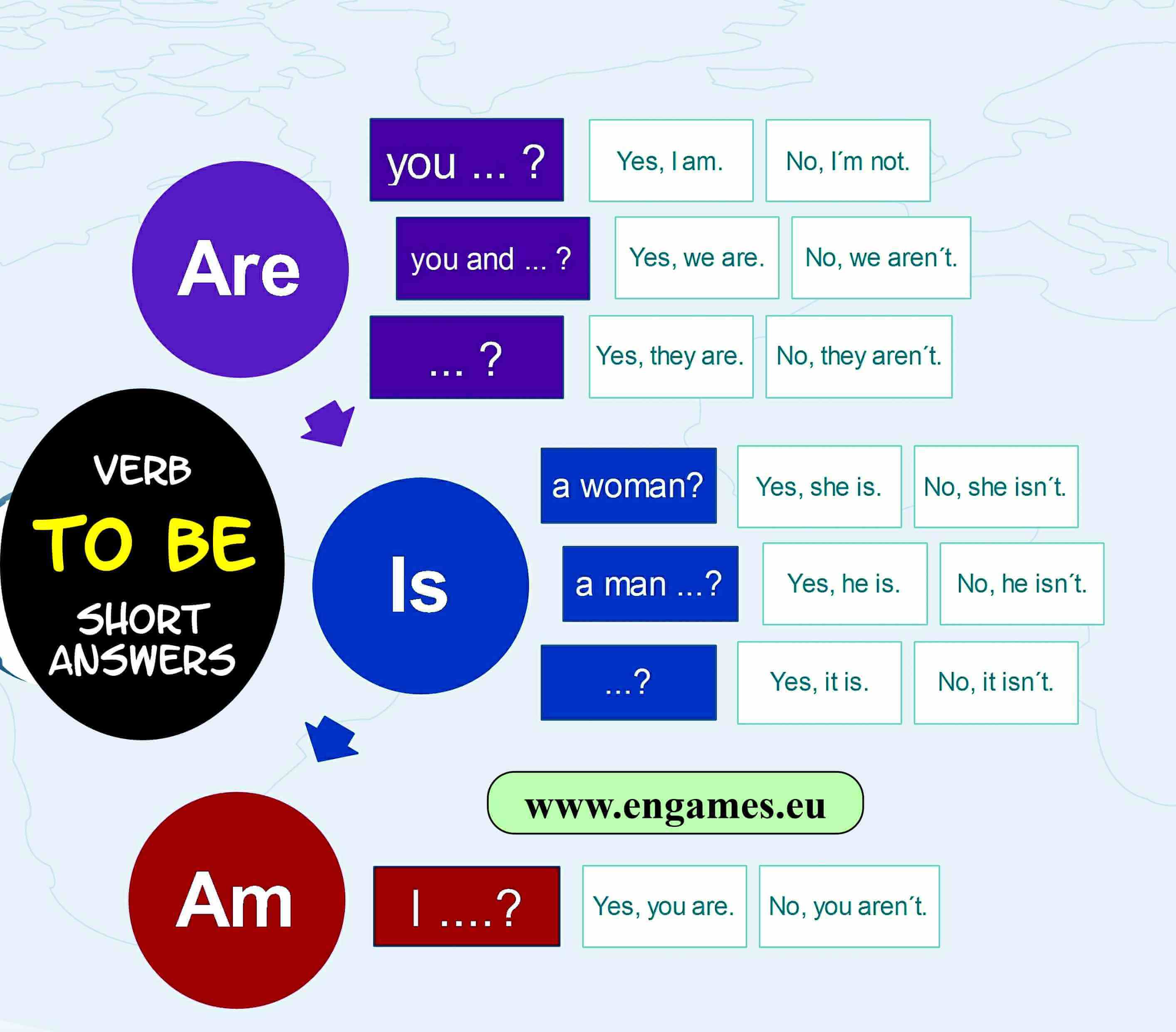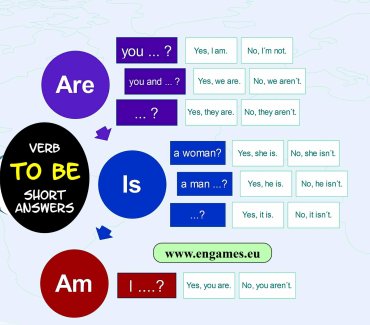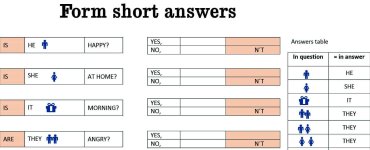I have spent a lot of time formulating a simple explanation how to form short answers to questions with the verb TO BE. You can find my previous attempt here. While the previous explanation did not work very well, this time, I feel that it is so simple that even the less gifted students understood it. I hope it will work for your students too. Please let me know.
In this post, there is a simple infographic explaining the usage of the short answers, and a speaking grammar activity to practice the grammar.
Short answers – infographic
To form the short answers correctly, students have to start from the beginning of the question. The first word is crucial.
If the question starts with AM, then the answer is either YES, YOU ARE. or NO, YOU AREN´T.
If the question begins with IS, then the students have to see, what follows. If it is followed by a woman, then the answers are YES, SHE IS or NO, SHE ISN´T. If IS is followed by a man then the answer is YES, HE IS or NO, HE ISN´T. In all other cases, the answers are YES, IT IS. or NO, IT ISN´T.
If the question starts with the word ARE then you have to see what follows it. If it is followed by YOU AND, the answers are YES, WE ARE. or NO, WE AREN´T. If the word ARE is followed by YOU without AND then the answers are YES, I AM or NO, I´M NOT. In all other cases, the correct answers are YES, THEY ARE or NO, THEY AREN´T.
The explanation might sound a bit complicated, but it is quite clearly depicted in the infographic.
ADVERT:
[showmyads]

Short answers – speaking activity
The activity is called pair cards. Students work in pairs. Print the following worksheet and give each student in the pair one half of it. Ask the students to work on their own and fill the free spaces with short answers to the questions.
After this, one of the students folds the paper in such a way that they cannot see the short answers. They read the questions aloud and say the short answers. Their partner sees the answers are correct and corrects as necessary. Three minutes later they swap.
Short answers – conclusion
Did the inforgraphic and speaking activity work?
It is a well accepted fact that students remember things better if they discover them for themselves. However, it is a real challenge to design our materials in such a way that we allow the students to discover the rules. I have tried to create such materials for my students and they were really successful. While last year my students often formed the questions wrongly, this year they claim it is really easy.
ADVERT:
[showmyads]
In this post I am going to share with you a worksheet with the two activities that will help your students discover the rules how to form questions and short answers with the verb to be in the present simple tense. Moreover, there is a quiz where your students can practise the grammar.
Verb to be – questions and short answers
Then tell your students to form questions in the squares under the sentences. Do not help your students for two or three minutes. Let them discover the logic for themselves. After the couple of minutes go around the classroom and help the struggling students. Show them a question or two and I am sure they will understand the principle.
Check the questions at the end of the exercise.
Now, hand out the second page. Once again, give your students a few minutes to complete as much as they can in the worksheet. Then, help the students by saying that to complete it correctly they need to use the table on the right and show them one sentence as an example. Then go around and help the struggling students.
Check the answers at the end.
And now your students know how to form the questions and answers.
Verb to be – quiz
The following quiz can help your students practise questions and short answers with the verb to be in the present simple tense either at school or at home. At the beginning, students should complete the questions and short answers. In the second part, students have to put the words into the correct order to form the questions. The students will be rewarded with a game if they pass. The quiz is in HTML5, so it will play on all desktops and mobile devices.
ADVERT:
[showmyadsa]
Verb to be – quiz


